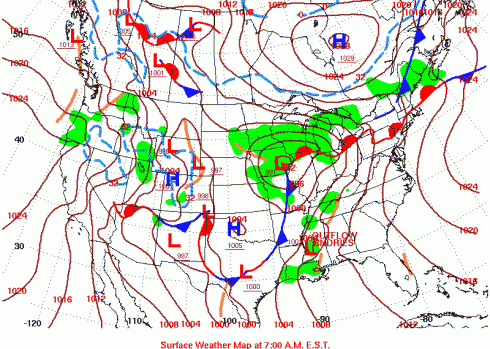
The cold fronts of mid-latitude cyclones bring thunderstorms, rain and spawn tornadoes like the ones we’ve seen over the last few days. In the spring and fall, these cyclones just sweep across the southern U.S. again and again. The line of their passage sort-of marks the northward migration of the sub-polar low in picture of the global atmospheric circulation system.

Each individual front, with its storms, is a feature of the weather. Climate, on the other hand, is the result of the average position over time: the series of fronts which make the southern U.S. wet in the spring and fall.
The sub-polar low is not the only feature that brings lots of seasonal rain. The ITCZ does also, and the rains that the ITCZ’s movement north and south of the equator bring, are what we call the monsoons. The yellow star on the animation, just to the north of the equator, sees monsoonal rains in the summer. Since the ITCZ follows the sun with the seasons, the monsoons always come in the summer; even in the southern hemisphere.